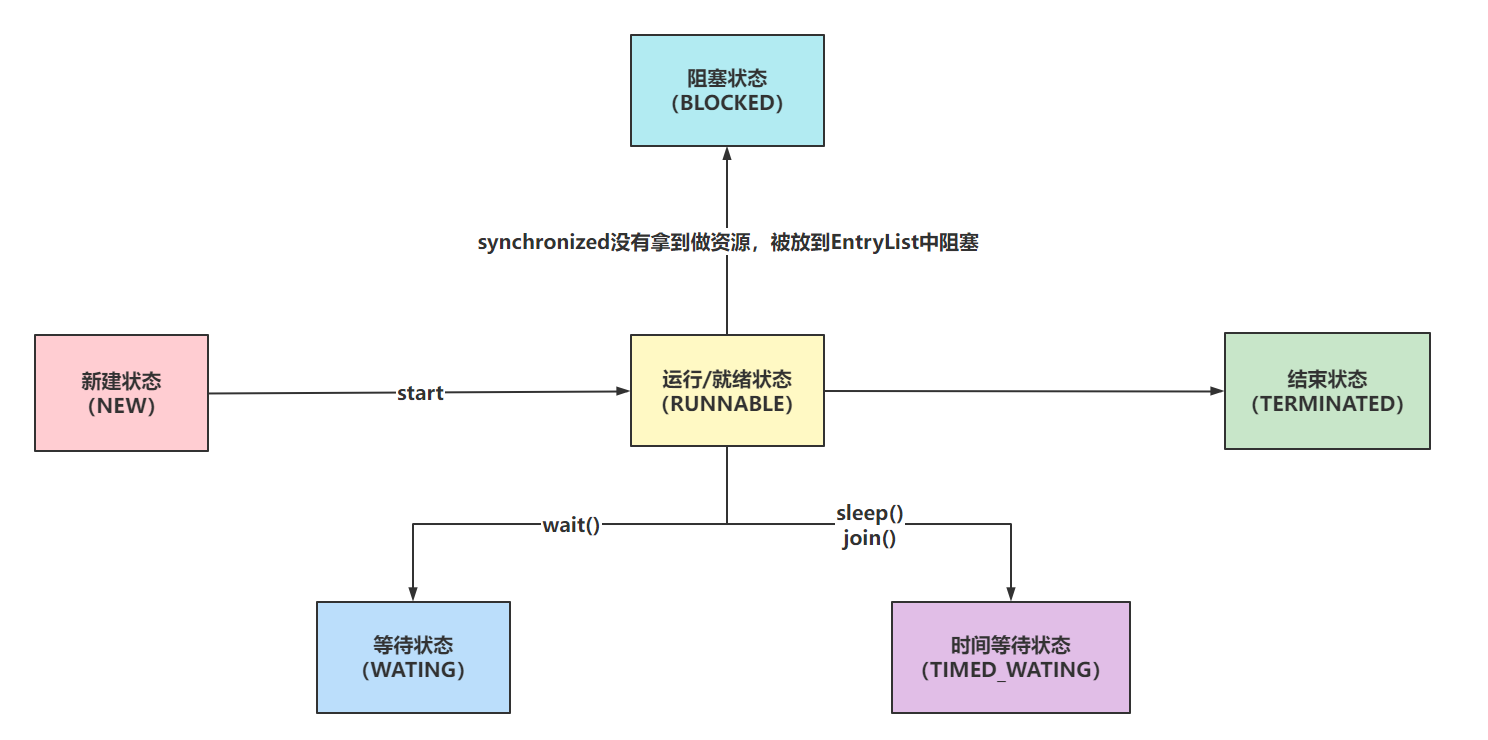5种状态一般是针对传统的线程状态来说(操作系统层面)

6种状态:Java中给线程准备的

NEW:Thread对象被创建出来了,但是还没有执行start方法。
RUNNABLE:Thread对象调用了start方法,就为RUNNABLE状态(CPU调度/没有调度)
BLOCKED、WAITING、TIME_WAITING:都可以理解为是阻塞、等待状态,因为处在这三种状态下,CPU不会调度当前线程
BLOCKED:synchronized没有拿到同步锁,被阻塞的情况
WAITING:调用wait方法就会处于WAITING状态,需要被手动唤醒
TIME_WAITING:调用sleep方法或者join方法,会被自动唤醒,无需手动唤醒
TERMINATED:run方法执行完毕,线程生命周期到头了
在Java代码中验证一下效果
NEW:
public static void main(String[] args) throws InterruptedException {Thread t1 = new Thread(() -> {});System.out.println(t1.getState());
}RUNNABLE:
public static void main(String[] args) throws InterruptedException {Thread t1 = new Thread(() -> {while(true){}});t1.start();Thread.sleep(500);System.out.println(t1.getState());
}BLOCKED:
public static void main(String[] args) throws InterruptedException {Object obj = new Object();Thread t1 = new Thread(() -> {// t1线程拿不到锁资源,导致变为BLOCKED状态synchronized (obj){}});// main线程拿到obj的锁资源synchronized (obj) {t1.start();Thread.sleep(500);System.out.println(t1.getState());}
}WAITING:
public static void main(String[] args) throws InterruptedException {Object obj = new Object();Thread t1 = new Thread(() -> {synchronized (obj){try {obj.wait();} catch (InterruptedException e) {e.printStackTrace();}}});t1.start();Thread.sleep(500);System.out.println(t1.getState());
}TIMED_WAITING:
public static void main(String[] args) throws InterruptedException {Thread t1 = new Thread(() -> {try {Thread.sleep(1000);} catch (InterruptedException e) {e.printStackTrace();}});t1.start();Thread.sleep(500);System.out.println(t1.getState());
}TERMINATED:
public static void main(String[] args) throws InterruptedException {Thread t1 = new Thread(() -> {try {Thread.sleep(500);} catch (InterruptedException e) {e.printStackTrace();}});t1.start();Thread.sleep(1000);System.out.println(t1.getState());
}知识来源:
【2023年面试】Java面向对象有哪些特征_哔哩哔哩_bilibili







)
)





)



)
)